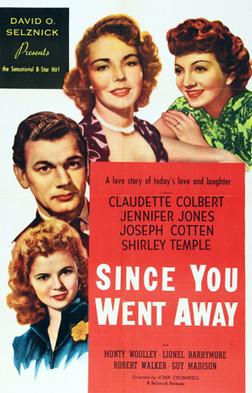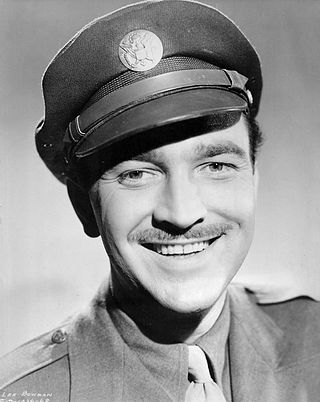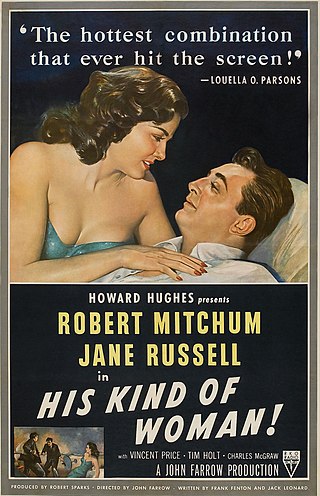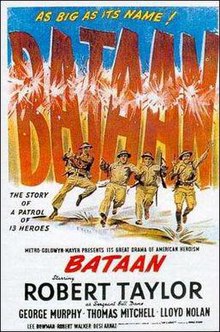Plot
The United States Army is conducting a fighting retreat. A high bridge—a wooden trestle on massive stone pillars—“spans a ravine on the Bataan Peninsula. After the Army and some civilians cross, an ad hoc group of thirteen hastily assembled soldiers from different units is assigned to blow it up and delay Japanese rebuilding efforts as long as possible. They dig in on a hillside. They succeed in blowing up the bridge, but their commander, Captain Henry Lassiter, is killed by a sniper, leaving Sergeant Dane in charge.
One by one, the defenders are killed, except Ramirez, who succumbs to malaria. Despite this, the outnumbered soldiers doggedly hold their position. Malloy shoots down an enemy aircraft with his Tommy gun before being killed. Dane and Todd creep up, undetected, on the bridge the Japanese have partially rebuilt and throw hand grenades, blowing it up.
Dane suspects that Todd is a soldier from his past named Danny Burns who was arrested for killing a man in a dispute, but escaped while Dane was guarding him.
Army Air Corps pilot Lieutenant Steve Bentley and his Filipino mechanic, Corporal Juan Katigbak, work frantically to repair a Beechcraft C-43 Traveler aircraft. They succeed, but Katigbak is killed and Bentley is mortally wounded. Bentley has explosives loaded aboard and flies into the bridge's foundation, destroying it for a third time.
The remaining soldiers repel a massive frontal assault, inflicting heavy losses and ultimately fighting hand-to-hand. Epps and Feingold are killed, leaving only Dane, Todd, and a wounded Purckett alive. Purckett is shot, while Todd is stabbed through the back by a Japanese soldier who had only feigned being dead. Before he dies, Todd admits to Dane he is Burns.
Now alone, Dane stoically digs his own marked grave beside those of his fallen comrades. The Japanese crawl through the ground fog near his position before opening fire and charging. Dane fires back; when his Tommy gun runs out of ammo, he switches to an M1917 Browning machine gun. He continually fires it directly into the camera lens as the end card reads: “So fought the heroes of Bataan, Their sacrifice made possible our victories in the Coral and Bismarck Seas, at Midway, on New Guinea and Guadalcanal. Their spirit will lead us back to Bataan!”
When the film was released, on June 3, 1943, the Allied offensive in the Pacific was a few months old. It would be a year and a half before the Battle to Retake Bataan (January 31 to February 25, 1945).
Reception
Bosley Crowther, critic for The New York Times , described it as "a surprisingly credible conception of what that terrible experience must have been for some of the men who endured it", albeit with "melodramatic flaws and ... some admitted technical mistakes." In the end, "it doesn't insult the honor of dead soldiers". [4]
Writing in The Nation, film critic Manny Farber describes Fixed Bayonets as “suspenseful, off-beat, variant of the Bill Maudlin cartoon…Funny, morbid, the best war film since Bataan (film) (1943).” [5] Farber adds: “I wouldn’t mind seeing it seven times.” [6]
The film was a hit when first released to theaters; according to MGM records it earned $2,049,000 in the US and Canada and $1,068,000 overseas, resulting in a profit of $1,140,000. [1] [7] [8]

Desiderio Alberto Arnaz y de Acha III, known as Desi Arnaz, was a Cuban actor, musician and bandleader. He played Ricky Ricardo on the American television sitcom I Love Lucy, in which he co-starred with his wife Lucille Ball. Arnaz and Ball are credited as the innovators of the syndicated rerun, which they pioneered with the I Love Lucy series.

Since You Went Away is a 1944 American epic drama film directed by John Cromwell for Selznick International Pictures and distributed by United Artists. It is an epic about the American home front during World War II that was adapted and produced by David O. Selznick from the 1943 novel Since You Went Away: Letters to a Soldier from His Wife by Margaret Buell Wilder. The music score was by Max Steiner, and the cinematography by Stanley Cortez, Lee Garmes, George Barnes (uncredited), and Robert Bruce (uncredited).

I Love Lucy is an American television sitcom that originally aired on CBS from October 15, 1951, to May 6, 1957, with a total of 180 half-hour episodes, spanning six seasons. The show starred Lucille Ball and her husband Desi Arnaz, along with Vivian Vance and William Frawley. The series follows the life of Lucy Ricardo (Ball), a young, middle-class housewife living in New York City, who often concocts plans with her best friends and landlords, Ethel and Fred Mertz, to appear alongside her bandleader husband, Ricky Ricardo (Arnaz), in his nightclub. Lucy is depicted trying numerous schemes to mingle with and be a part of show business. After the series ended in 1957, a modified version of the show continued for three more seasons, with 13 one-hour specials, which ran from 1957 to 1960. It was first known as The Lucille Ball–Desi Arnaz Show, and later, in reruns, as The Lucy–Desi Comedy Hour.
Continental Tire the Americas, LLC, d.b.a. General Tire, is an American manufacturer of tires for motor vehicles, and semi trucks. Founded in 1915 in Akron, Ohio by William Francis O'Neil, Winfred E. Fouse, Charles J. Jahant, Robert Iredell, and H.B. Pushee as The General Tire & Rubber Company using funding from Michael O'Neil, William Francis O'Neills' father, who owned Akron's O'Neil's Department Store. The company later diversified by 1984 into a conglomerate with holdings in tire manufacturing, rubber compounds, rocketry and aeronautics (Aerojet), and broadcasting.

Desiderio Alberto Arnaz IV, better known as Desi Arnaz Jr., is an American retired actor and musician. He is the son of Lucille Ball and Desi Arnaz.

The Horse Soldiers is a 1959 American adventure war western film set during the American Civil War directed by John Ford and starring John Wayne, William Holden and Constance Towers. The screenplay by John Lee Mahin and Martin Rackin was loosely based on Harold Sinclair's 1956 novel of the same name, a fictionalized version of Grierson's Raid in Mississippi.

The Story of G.I. Joe, also credited in prints as Ernie Pyle's Story of G.I. Joe, is a 1945 American war film directed by William A. Wellman and starring Burgess Meredith and Robert Mitchum. The film was nominated for four Academy Awards, including Mitchum's only career Oscar nomination.

Lee Bowman was an American film and television actor. According to one obituary, "his roles ranged from romantic lead to worldly, wisecracking lout in his most famous years".

Lawrence James Tierney was an American film and television actor who is best known for his many screen portrayals of mobsters and tough guys in a career that spanned over 50 years. His roles mirrored his own frequent brushes with the law. In 2005, film critic David Kehr of The New York Times described "the hulking Tierney" as "not so much an actor as a frightening force of nature".

So Proudly We Hail! is a 1943 American war film directed and produced by Mark Sandrich and starring Claudette Colbert, Paulette Goddard – who was nominated for an Academy Award for Best Supporting Actress for her performance – and Veronica Lake. Also featuring George Reeves, it was produced and released by Paramount Pictures.

His Kind of Woman is a 1951 film noir starring Robert Mitchum and Jane Russell. The film features supporting performances by Vincent Price, Raymond Burr and Charles McGraw. The direction of the film, which was based on the unpublished story "Star Sapphire" by Gerald Drayson, is credited to John Farrow.

Malaya is a 1949 American war thriller film set in colonial Malaya during World War II directed by Richard Thorpe and starring Spencer Tracy, James Stewart and Valentina Cortese. The supporting cast features Sydney Greenstreet, John Hodiak, and Lionel Barrymore, with Richard Loo and Gilbert Roland. It was produced by Metro-Goldwyn-Mayer.

Hitler's Children is a 1943 American black-and-white war film made by RKO Radio Pictures. The film stars Tim Holt, Bonita Granville and Kent Smith and was directed by Edward Dmytryk from an adaptation by Emmet Lavery of Gregor Ziemer's book Education for Death, which had previously been adapted as a Disney animated short film.

Back to Bataan is a 1945 American black-and-white World War II war film drama from RKO Radio Pictures, produced by Robert Fellows, directed by Edward Dmytryk, that stars John Wayne and Anthony Quinn. The film depicts events that took place after the Battle of Bataan (1941–42) on the island of Luzon in the Philippines. The working title of the film was The Invisible Army.

Rage in Heaven is a 1941 American psychological thriller film noir about the destructive power of jealousy. It was directed by W.S. Van Dyke and based on the 1932 novel by James Hilton. It features Robert Montgomery, Ingrid Bergman, and George Sanders.

Pride of the Marines is a 1945 American biographical war film starring John Garfield and Eleanor Parker. It tells the story of U.S. Marine Al Schmid in World War II, his heroic stand against a Japanese attack during the Battle of Guadalcanal, in which he was blinded by a grenade, and his subsequent rehabilitation. The film was based on the 1944 Roger Butterfield book Al Schmid, Marine.

Lucille Désirée Ball was an American actress. She was nominated for 13 Primetime Emmy Awards, winning five times, and was the recipient of several other accolades, such as the Golden Globe Cecil B. DeMille Award and two stars on the Hollywood Walk of Fame. She earned many honors, including the Women in Film Crystal Award, an induction into the Television Hall of Fame, a Kennedy Center Honor, and the Governors Award from the Academy of Television Arts & Sciences.

Soldiers Three is a 1951 American adventure film based upon an element of several short stories by Rudyard Kipling featuring the same trio of British soldiers, portrayed in the film by Stewart Granger, Robert Newton, and Cyril Cusack. The picture was directed by Tay Garnett.

They Got Me Covered is a 1943 American comedy thriller film directed by David Butler and starring Bob Hope and Dorothy Lamour. Otto Preminger appears in a supporting role. It also known by the alternative titles Washington Story and The Washington Angle.

The 149th Armored Regiment was an armored regiment that was part of the California Army National Guard. Its lineage dates back to a cavalry unit organized in 1895 in Salinas. As Troop C, the unit's first major action occurred when it deployed to help in the aftermath of the 1906 San Francisco Earthquake. In 1916, still as Troop C, the unit served along the Mexico–United States border near Nogales, Arizona to deter further border incursions, due to events surrounding the Pancho Villa Expedition. The following year, Troop C was activated then reorganized and redesignated as Company B, 145th Machine Gun Battalion upon the United States' entry into World War I; as part of the 40th Division, the battalion deployed to France in 1918, and returned to the United States in 1919.



















